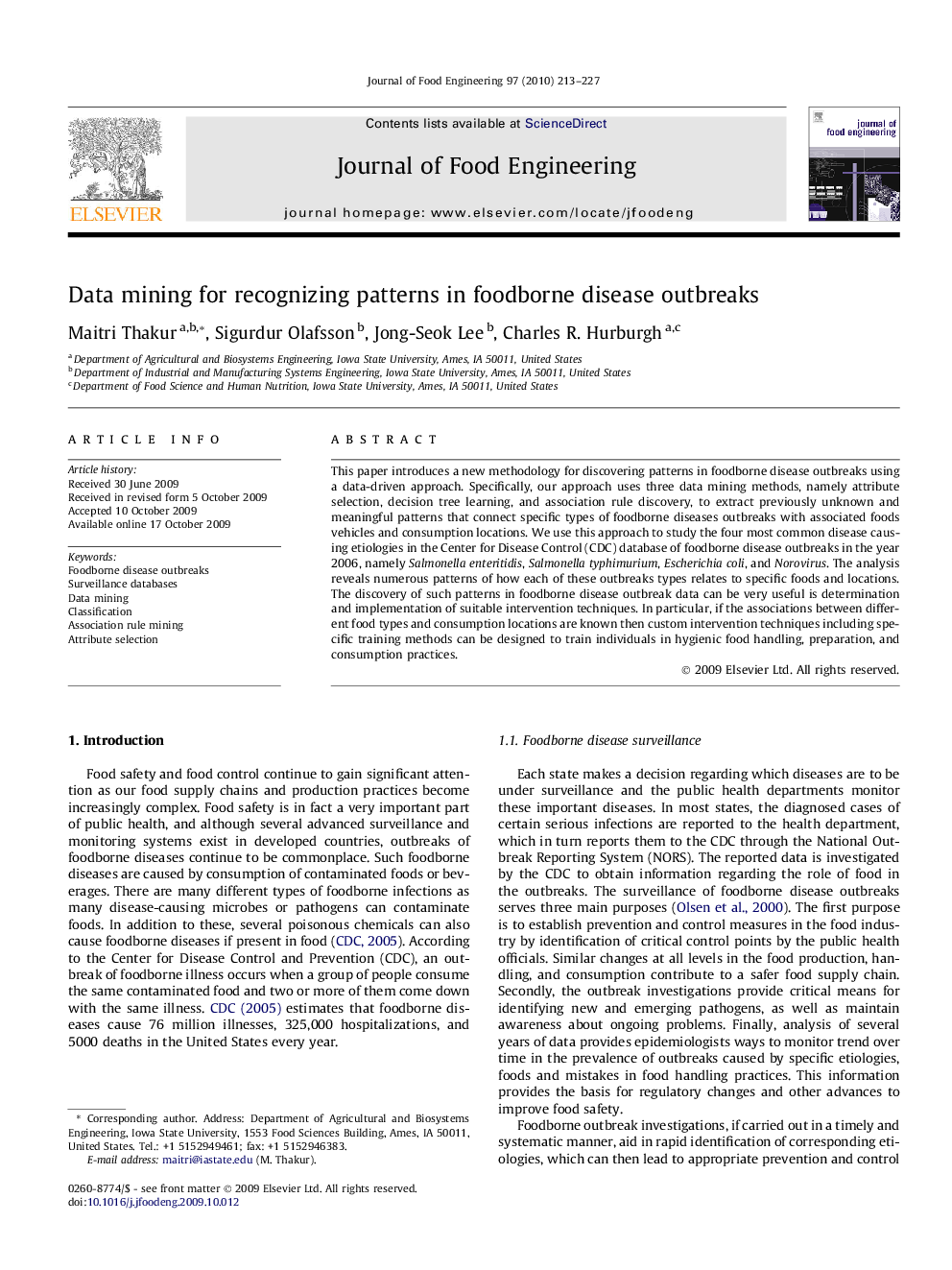| Article ID | Journal | Published Year | Pages | File Type |
|---|---|---|---|---|
| 224155 | Journal of Food Engineering | 2010 | 15 Pages |
This paper introduces a new methodology for discovering patterns in foodborne disease outbreaks using a data-driven approach. Specifically, our approach uses three data mining methods, namely attribute selection, decision tree learning, and association rule discovery, to extract previously unknown and meaningful patterns that connect specific types of foodborne diseases outbreaks with associated foods vehicles and consumption locations. We use this approach to study the four most common disease causing etiologies in the Center for Disease Control (CDC) database of foodborne disease outbreaks in the year 2006, namely Salmonella enteritidis, Salmonella typhimurium, Escherichia coli, and Norovirus. The analysis reveals numerous patterns of how each of these outbreaks types relates to specific foods and locations. The discovery of such patterns in foodborne disease outbreak data can be very useful is determination and implementation of suitable intervention techniques. In particular, if the associations between different food types and consumption locations are known then custom intervention techniques including specific training methods can be designed to train individuals in hygienic food handling, preparation, and consumption practices.
